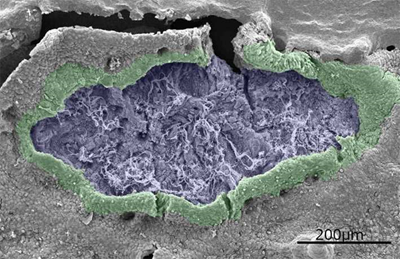1.Research Summary
The Department of Dermatology conducts highly technical research on the
structure and function of normal skin, as well as on the pathology of skin
diseases.
2.Research Groups
No research groups for specific areas have been organized.
3.Research subjects
- Genetic skin diseases
- Gene therapy for epidermolysis bullosa
- Beneficial biomarkers for diagnosis of SJS/TEN
- Morphological analyses of the human touch domes
4.Research Results
|
[Area] Dermatology
|
|
[Research subject]
Gene therapy for epidermolysis bullosa
|
|
[Description]
Genome editing with engineered site-specific endonucleases involves nonhomologous
end-joining, leading to reading frame disruption. The approach is applicable
to dominant negative disorders, which can be treated simply by knocking
out the mutant allele, while leaving the normal allele intact. We succeeded
in editing a dominant negative mutation in the COL7A1 gene in dominant
dystrophic epidermolysis bullosa using this strategy.
|
|
[Area] Dermatology
|
|
[Research subject]
Beneficial biomarkers for diagnosis of SJS/TEN
|
|
[Description]
Our research subject is to identify beneficial biomarkers for diagnosis
of SJS/TEN.
We have reported that granulysin and sFas ligand levels are higher in patients
with early-stage SJS/TEN than those in patients with ordinary drug-induced
skin reactions. Furthermore, we produced a novel immunochromatographic
assay to detect high levels of serum granulysin for diagnosis. Using quantitative
technique for protein analysis with a mass spectrometer, we are conductiong
to detect specific and more effective biomarkers. In addition, we established
a model mouse of SJS/TEN for the first time in the world. With this model,
we perform further researches for clarifying mechanisms of SJS/TEN pathogenesis
and discovering a therapeutic agent.
|
|
[Area] Dermatology
|
|
[Research subject]
Morphological analyses of the human touch domes
|
|
[Description]
The touch dome is a mechanoreceptor in the mammalian hairy skin. The shape
of the touch dome varies depending on the species. In humans, it is often
difficult to identify a touch dome by its surface appearance or even by
light microscopy. We previously clarified the three-dimensional structure
of the human touch dome by scanning electron microscopy (SEM). The touch
dome was demonstrated as a concave region surrounded by thick epidermal
ridge. We also revealed that the hair follicles were not necessarily accompanied
by the dome. The distribution and the frequency of the human touch dome
have been studied to evaluate the individual variability.
|
[Photographs]

|
Please see the Dermatology website for a detailed description of our research.

